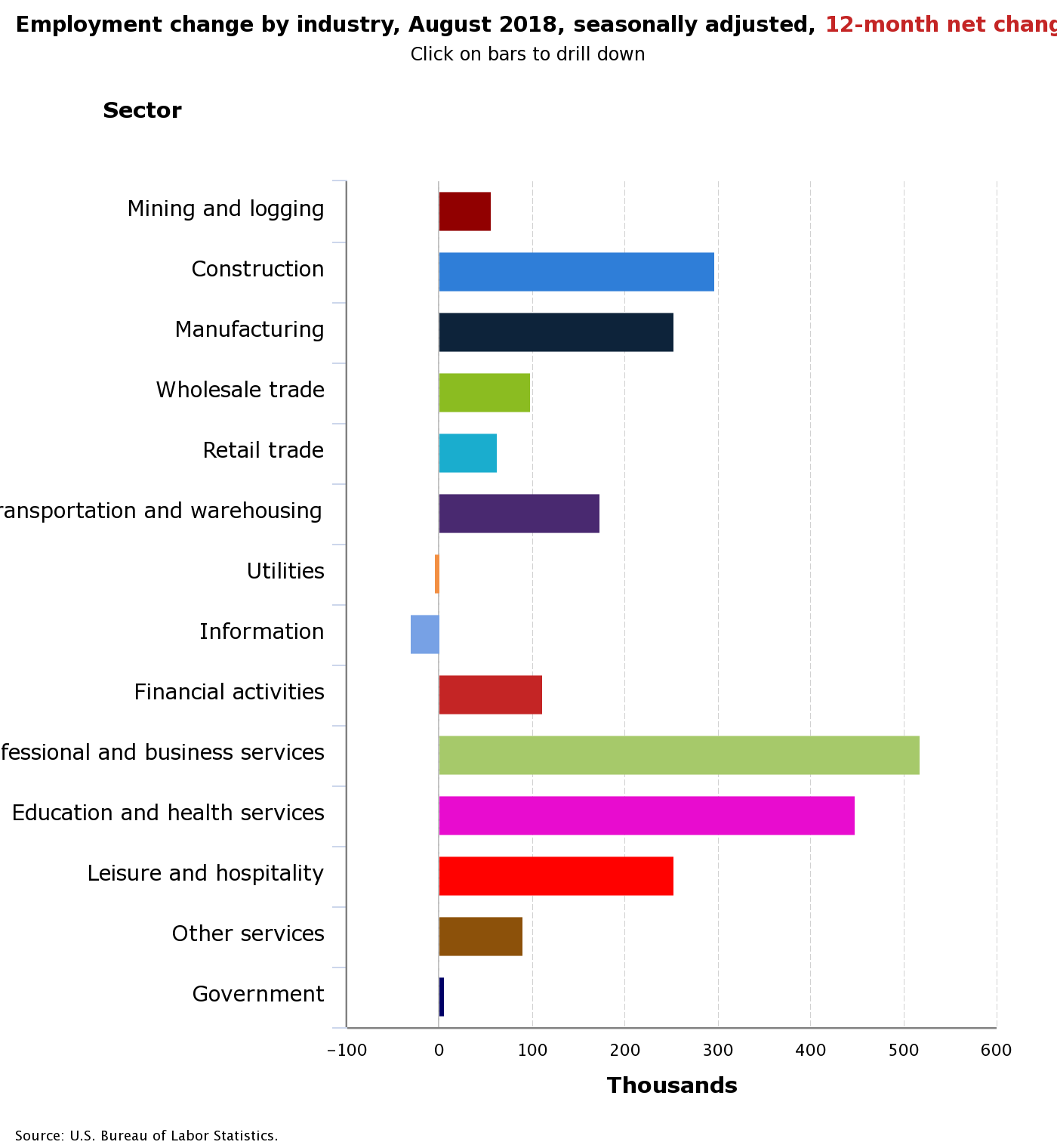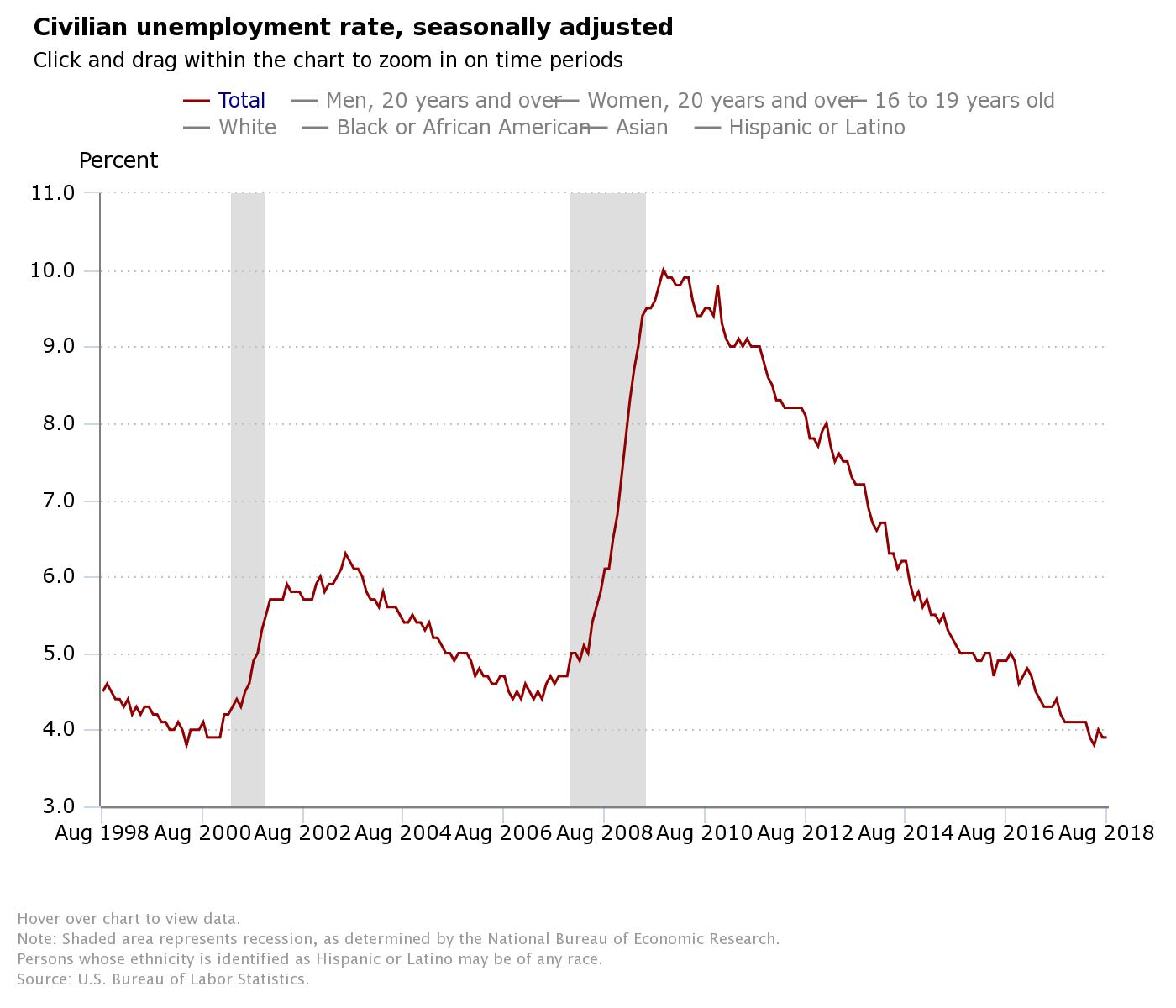The Labor Department reported that there were 201,000 jobs created in the U.S. economy in August, above the consensus expectation of 190,000. However, revisions subtracted 50,000 to the prior two months as June was revised to 208,000 from 224,000 and July was revised to 147,000 from 157,000. Payrolls have averaged 207,000 per month so far this year, up from 182,000 last year.
The unemployment rate was unchanged at 3.9% in August and was down from 4.4% one year ago. The jobless rate remains well below the rate of what is generally believed to be the “natural rate of unemployment” of 4.5% and continues to suggest that there will be growing upward pressure on wage rates. The jobless rate is calculated from a different survey than the survey used to calculate the number of new jobs (the household versus the establishment survey, respectively). Among major worker groups, the unemployment rate for adult men was 3.5%, adult women 3.6% and teenagers 12.8%.
A broader measure of unemployment, which includes those who are working part time but would prefer full-time jobs and those that they have given up searching—the U-6 unemployment rate—fell to 7.4% in August from 7.5% in July and was down from 8.6% in August 2017. Last month’s U-6 rate was a 17-year low.
In August, employment in health care rose by 33,000. In the past year, health care has added 301,000 jobs.
The labor force participation rate, which is a measure of the share of working age people who are employed or looking for work fell 0.2 percentage points to 62.7%, near its cyclical low of 62.5% in October 2015. The low rate at least partially reflecting the effects of an aging population.
Average hourly earnings for all employees on private nonfarm payrolls rose in August by ten cents to $27.16. Over the past 12 months, average hourly earnings have increased by 77 cents, or 2.9%. This was a nine-year high. Last year, they averaged 2.6%.
The August jobs report and the acceleration in average hourly earnings will provide further support for increases in interest rates through 2018 by the Federal Reserve. As widely expected, the Fed increased the fed funds rate by 25 basis points at its June FOMC meeting, the second increase in 2018. The Fed has raised rates by a quarter percentage point seven times since late 2015, and most recently to a range between 1.75% and 2.00%, after keeping them near zero for seven years. The June projections by the Fed now show a total of four increases in the fed funds rate are anticipated in 2018 (two of which have already occurred), up from an earlier expectation of three. This would bring the benchmark rate to a range of 2.25% to 2.5% by year end. The Federal Reserve also upgraded its view of the economy by substituting the word “strong” for “solid” in the statement that policy makers released after its meeting. Further increases in the fed funds rate are anticipated in 2019. Their projection for the fed funds rate in 2020 is 3.4%. Hence, it is likely that there will be another 25-basis point increase announced by the Fed at its September meeting in two weeks and another one at its December FOMC meetings.

